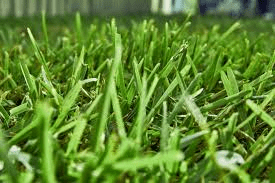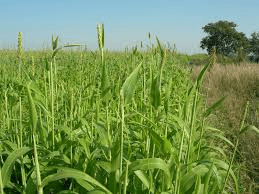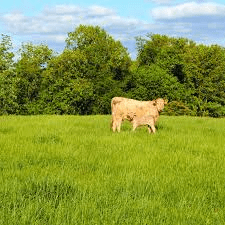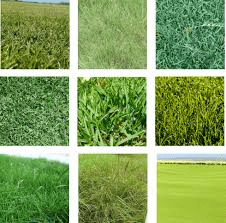Grasses are an essential part of the earth’s ecosystem and cover large areas of the planet’s surface. These plants are versatile and serve multiple purposes, from providing lawns and pastures to adding ornamental beauty to landscapes. Grasses are members of the Poaceae family, a vast group of plants that includes over 12,000 species worldwide.
They range from the small, delicate grasses used for turf to the tall, lush grasses grown for forage and animal feed. This guide will introduce you to different types of grasses, their classifications, and how to grow and maintain them.
Classification of Grasses
Grasses are classified based on their use, growth habits, and life cycles. This classification helps determine where and how they can be effectively used. Below is a simple breakdown of grass classifications:
1. Cool-Season Grasses: Cool-season grasses thrive in cooler temperatures, generally growing best in spring and fall. These grasses remain green throughout winter in many regions but may go dormant in extremely cold conditions.
Examples: Kentucky bluegrass, perennial ryegrass, and fescue.
2. Warm-Season Grasses: Warm-season grasses thrive in hot summer months and grow actively in warmer temperatures. They tend to go dormant during cooler months or winter, but are highly drought-tolerant.
Examples: Bermuda grass, zoysia grass, and buffalo grass.
3. Annual vs. Perennial Grasses: Grasses can also be categorized by their life cycle:
Annual grasses grow for one season, then die and need to be replanted the following year. They are often used as cover crops.
Perennial grasses grow back year after year, making them ideal for lawns, pastures, and ornamental landscapes.
Common Turf Grasses

Turf grasses are specifically grown to create lawns, parks, golf courses, and sports fields. These grasses are selected for their ability to withstand frequent mowing, foot traffic, and their overall appearance. Here are some of the most common turf grasses:
1. Kentucky Bluegrass: Kentucky bluegrass is one of the most popular cool-season turf grasses. It has a fine texture, deep green color, and spreads through underground stems called rhizomes. Kentucky bluegrass is commonly used in home lawns and sports fields, thanks to its durability and aesthetic appeal.
2. Bermuda Grass: Bermuda grass is a popular warm-season turf grass known for its heat and drought tolerance. It has a coarse texture and grows best in full sun. Bermuda grass is often used in southern regions for golf courses, athletic fields, and residential lawns.
3. Zoysia Grass: Zoysia grass is a dense, warm-season turf grass with excellent drought tolerance. It forms a thick mat, which helps to choke out weeds. Zoysia grass is commonly used in lawns, parks, and golf courses due to its ability to handle heavy foot traffic.
4. Perennial Ryegrass: Perennial ryegrass is another cool-season grass that is commonly used in athletic fields and high-traffic areas. It establishes quickly, making it an excellent choice for overseeding, but it may require more frequent watering than other turf grasses.
5. Fescue: There are several types of fescue grasses, including tall fescue and fine fescue. These cool-season grasses are often used in areas that experience extreme temperature fluctuations. Fescues are tolerant of shade and drought, making them popular for lawns and parks.
Read Also Principles and Techniques in Livestock Breeding (Methods of Genetic Improvement)
Types of Forage Grasses

Forage grasses are grown primarily for animal feed. These grasses are vital in pastures and are often used to make hay or silage for livestock. Forage grasses provide essential nutrients to grazing animals like cattle, sheep, and horses. Here are some commonly grown forage grasses:
1. Timothy Grass: Timothy grass is a cool-season perennial grass commonly used for hay production. It’s favored for its nutritional value and palatability, especially for horses. Timothy grass has soft leaves and is often mixed with clover for a balanced diet in pastures.
2. Orchard Grass: Orchard grass is another cool-season perennial forage grass. It’s known for its tolerance to shade and ability to grow in various soil types. Orchard grass is nutritious and grows in dense, clumping bunches, making it a popular choice for grazing animals.
3. Bermuda Grass (Forage Variety): While Bermuda grass is commonly used as turf, certain varieties are grown specifically for forage. It’s a warm-season grass that is highly productive and can provide continuous grazing throughout summer in warmer climates.
4. Bromegrass: Bromegrass is a cool-season grass widely used in pastures and hayfields. It’s highly palatable for livestock and has good regrowth after grazing. It grows well in cooler climates and is often mixed with legumes in pastures for increased nutrition.
5. Alfalfa (Forage Legume): Though not technically a grass, alfalfa is a legume often grown with forage grasses to improve the nutritional content of the pasture. Alfalfa is high in protein and serves as an excellent feed source for dairy cattle and other livestock.
Ornamental Grasses
Ornamental grasses are grown for their aesthetic appeal rather than for functional use like turf or forage. These grasses are often used in landscaping to add texture, movement, and visual interest. Many ornamental grasses are low-maintenance and can thrive in a variety of conditions. Below are some popular ornamental grass types:
1. Fountain Grass (Pennisetum): Fountain grass is a graceful, clumping ornamental grass with arching flower spikes. It’s a warm-season grass that grows best in full sun. Fountain grass is often used in flower beds, borders, and container gardens due to its flowing, fountain-like appearance.
2. Maiden Grass (Miscanthus): Maiden grass is a large, warm-season ornamental grass that produces feathery plumes of flowers in late summer. It’s valued for its height, which can reach up to 10 feet, and its ability to add movement and drama to landscapes.
3. Blue Fescue: Blue fescue is a small, clumping ornamental grass that has a striking blue-gray color. It’s a cool-season grass that grows best in well-drained soil and full sun. Blue fescue is often used in rock gardens, borders, and as ground cover.
4. Switchgrass (Panicum): Switchgrass is a native ornamental grass that is valued for its tolerance to drought and poor soils. It produces airy, delicate flower spikes in late summer and can grow up to 5 feet tall. Switchgrass is often used in wildflower gardens, prairies, and natural landscapes.
5. Japanese Blood Grass: Japanese blood grass is an ornamental grass known for its vibrant red-tipped leaves. It’s a warm-season grass that adds a splash of color to gardens and is commonly used in borders or as an accent plant.
Grasses Used in Agriculture and Livestock Feed
Grasses play a crucial role in agriculture, particularly in providing feed for livestock. Different types of forage grasses are grown to supply nutritious and palatable feed for grazing animals. Below are some common grasses used in agriculture:
1. Alfalfa: Alfalfa, though technically a legume, is often grown with forage grasses to improve livestock diets. It’s rich in protein, making it an excellent feed source for dairy cattle, horses, and other livestock.
2. Timothy Grass: Timothy grass is a perennial cool-season grass widely used for hay production. It’s highly palatable for horses and other livestock, making it a preferred choice for farmers.
3. Bermuda Grass (Forage Variety): Bermuda grass is a warm-season forage grass that is highly productive in pastures. It provides continuous grazing throughout summer and is known for its high yield and digestibility.
4. Orchard Grass: Orchard grass is another cool-season grass that is popular in pastures. It’s drought-tolerant and mixes well with legumes like clover to provide a balanced diet for livestock.
5. Bromegrass: Bromegrass is a valuable forage grass in colder regions, where it’s used for grazing and hay production. It’s highly nutritious and has good regrowth after grazing.
Read Also Digestive Anatomy of Ruminants
Grasses in Environmental Conservation

Grasses play a vital role in environmental conservation, helping to protect ecosystems, improve air and water quality, and support biodiversity. Here’s how grasses contribute to environmental sustainability:
1. Soil Stabilization: As mentioned earlier, grasses are essential in preventing soil erosion. They bind the soil, improving its structure and reducing the loss of fertile topsoil.
2. Carbon Sequestration: Grasses absorb carbon dioxide from the atmosphere and store it in their roots and soil. This process, known as carbon sequestration, helps mitigate the effects of climate change by reducing the amount of CO2 in the atmosphere.
Example: Perennial grasses like switchgrass and miscanthus are particularly effective at sequestering carbon.
3. Supporting Wildlife: Grasses provide habitats for various species of insects, birds, and small animals. Native grasslands are home to many endangered species, and conserving these areas is crucial for maintaining biodiversity.
Example: Prairie grasses like bluestem and Indian grass support a wide range of wildlife in North America.
4. Water Purification: Grasses help filter and purify water by trapping pollutants and sediments before they reach water bodies. They are often used in riparian zones and wetlands to improve water quality.
Example: Reed grass is commonly planted in wetlands to filter out contaminants and improve water purity.
5. Reducing Urban Heat Islands: In urban areas, grasses can reduce the heat island effect by cooling the environment through evapotranspiration. Lawns, parks, and green spaces with grass help lower temperatures and improve air quality in cities.
Grasses play an essential role in our daily lives, whether as turf for lawns, forage for livestock, or ornamental features in landscapes. Each type of grass has unique characteristics, making it suitable for different climates, soils, and uses. Understanding the various types of grasses and their classifications helps gardeners, landscapers, and farmers choose the right grass for their specific needs. Whether you’re planting a lush green lawn, creating a beautiful landscape with ornamental grasses, or growing nutritious forage for animals, this guide provides the foundation for successful grass cultivation.
Do you have any questions, suggestions, or contributions? If so, please feel free to use the comment box below to share your thoughts. We also encourage you to kindly share this information with others who might benefit from it. Since we can’t reach everyone at once, we truly appreciate your help in spreading the word. Thank you so much for your support and for sharing!
Read Also How to Store Fresh Fruit, Vegetables and Herbs
Frequently Asked Questions
We will update this section soon.

